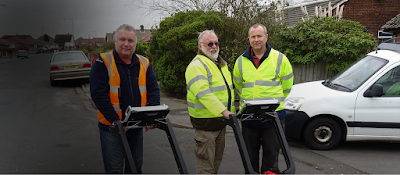HSG47 is a guide issued by the Health & Safety Executive, which is
aimed at all those involved in commissioning, planning, managing, and carrying
out work on or near underground services. The HSE says that it will also be of
use to the owners and operators of such services.
The guide
outlines the potential dangers of working on or near such services with regard
health and safety. It also gives advice on reducing any such dangers and refers
to the indirect risks arising through damage to services.
Possibly the
best piece of advice that the guide gives is that all operators should assume
that underground services are there unless they have been shown otherwise.
Underground services can be found anywhere. Some places are obvious, such as
the high street or a residential area. There will be electricity cables, water
pipes, telecoms, and sewers as an absolute minimum, but there could also be gas
and other pipes.
Striking an
electricity cable can cause serious injury, or even be fatal, while, striking a
gas pipe can easily cause an explosion. Even a water pipe can cause injury,
since water under pressure can hurl stones and other debris out of the earth. It
could also cause serious flooding and perhaps collapse the sides of an
excavation while it has men working in it.
Striking a
telephone cable may not cause direct injury, but will considerably
inconvenience the local populace, and may result in claims for damages. For
example, it could shut down a business because it cannot get on to the internet
which could result in considerable loss.
Before
undertaking any excavation, the first point of call must be the local utilities
for plans of where their cables and pipes run. However, such plans should not
be taken as gospel since they are not always accurate and, in some cases, may
not exist.
All surveyors
undertaking the location of underground services should attend an HSG47course which will show them how to use the CAT and Genny in all modes in
order to locate services. Such a course will also explain the limitations of
the equipment and how to avoid making any mistakes because of those
limitations.

No comments:
Post a Comment